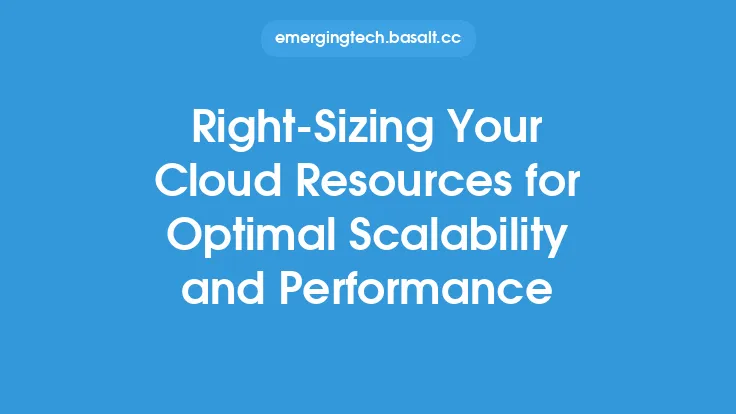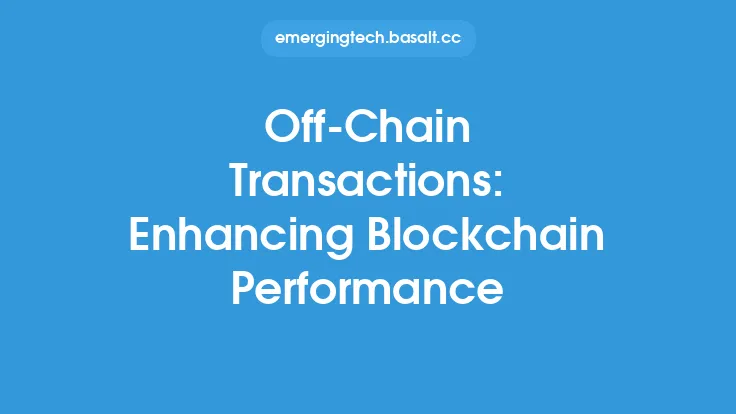The development of smart contracts has become a crucial aspect of blockchain technology, enabling the creation of self-executing contracts with the terms of the agreement written directly into lines of code. However, as the complexity and scope of smart contracts continue to grow, optimizing their performance has become a key challenge for developers. Optimizing smart contracts is essential to ensure they can handle a high volume of transactions, reduce gas costs, and improve overall efficiency. In this article, we will delve into the various techniques used to optimize smart contracts for improved performance.
Understanding the Importance of Optimization
Optimizing smart contracts is critical to ensure they can operate efficiently and effectively on a blockchain network. A well-optimized smart contract can significantly reduce gas costs, improve transaction processing times, and enhance the overall user experience. Gas costs, in particular, can be a significant burden on users, and optimizing smart contracts to minimize these costs can make a substantial difference. Furthermore, optimized smart contracts can also help to prevent network congestion, which can occur when a large number of transactions are being processed simultaneously.
Code Optimization Techniques
One of the primary ways to optimize smart contracts is through code optimization techniques. These techniques involve refining the code to reduce unnecessary computations, minimize storage usage, and improve execution efficiency. Some common code optimization techniques used in smart contract development include loop optimization, where loops are minimized or eliminated to reduce computational overhead; variable optimization, where variables are carefully selected and used to minimize storage and computational costs; and function optimization, where functions are optimized to reduce the number of calls and improve execution efficiency.
Data Storage Optimization
Data storage is another critical aspect of smart contract optimization. Smart contracts often require storing large amounts of data, which can result in significant storage costs. Optimizing data storage can help reduce these costs and improve overall performance. Some techniques used to optimize data storage include data compression, where data is compressed to reduce storage requirements; data encoding, where data is encoded to reduce storage costs; and data caching, where frequently accessed data is stored in a cache to reduce the need for repeated storage accesses.
Gas Optimization Techniques
Gas optimization is a critical aspect of smart contract optimization, as gas costs can be a significant burden on users. Gas optimization techniques involve minimizing the amount of gas required to execute a smart contract. Some common gas optimization techniques include minimizing the number of storage accesses, reducing the number of computational operations, and optimizing the use of gas-intensive functions. Additionally, using gas-efficient data types, such as bytes instead of strings, can also help reduce gas costs.
Modularity and Reusability
Modularity and reusability are essential principles in smart contract optimization. By breaking down complex smart contracts into smaller, modular components, developers can improve maintainability, reduce bugs, and optimize performance. Reusability also plays a critical role, as reusable code can help reduce development time and improve overall efficiency. Modularity and reusability can be achieved through techniques such as code modularization, where code is broken down into smaller modules; function reuse, where functions are reused across multiple contracts; and library reuse, where libraries are reused across multiple contracts.
Testing and Debugging
Testing and debugging are critical steps in the smart contract optimization process. Thorough testing and debugging can help identify performance bottlenecks, optimize code, and improve overall efficiency. Some common testing and debugging techniques include unit testing, where individual components are tested; integration testing, where multiple components are tested together; and fuzz testing, where contracts are tested with random inputs to identify potential vulnerabilities.
Best Practices for Optimization
To optimize smart contracts effectively, developers should follow best practices that prioritize performance, security, and maintainability. Some best practices for optimization include keeping contracts simple and concise, avoiding unnecessary complexity; using established design patterns and libraries; and continuously testing and debugging contracts to identify performance bottlenecks. Additionally, using optimization tools and frameworks, such as the Ethereum optimizer, can also help improve performance and reduce gas costs.
Conclusion
Optimizing smart contracts is a critical aspect of blockchain development, as it can significantly improve performance, reduce gas costs, and enhance the overall user experience. By using code optimization techniques, data storage optimization, gas optimization techniques, modularity and reusability, testing and debugging, and following best practices, developers can create high-performance smart contracts that operate efficiently and effectively on a blockchain network. As the blockchain ecosystem continues to evolve, the importance of smart contract optimization will only continue to grow, making it essential for developers to prioritize optimization in their development workflows.





